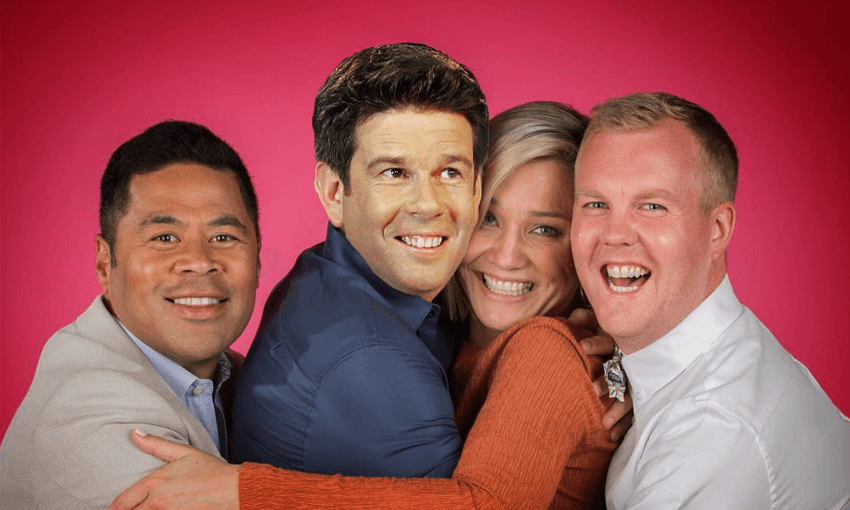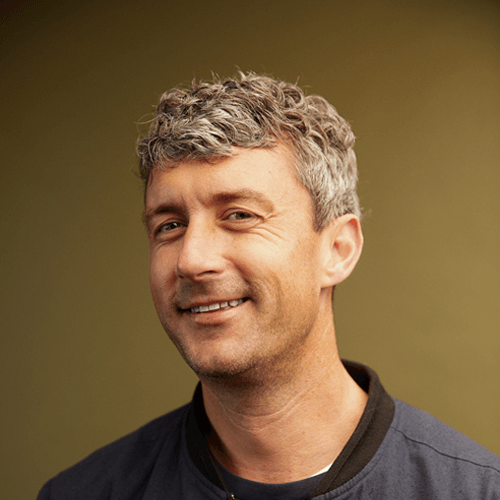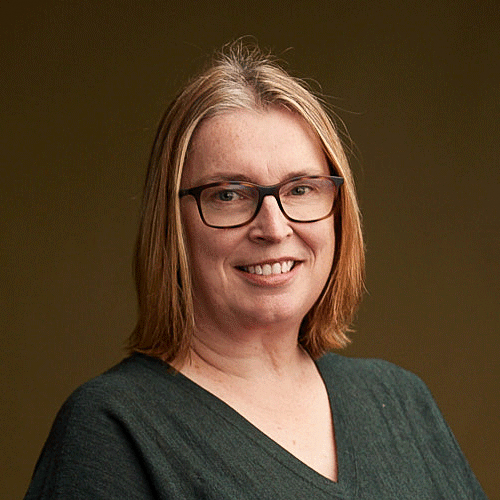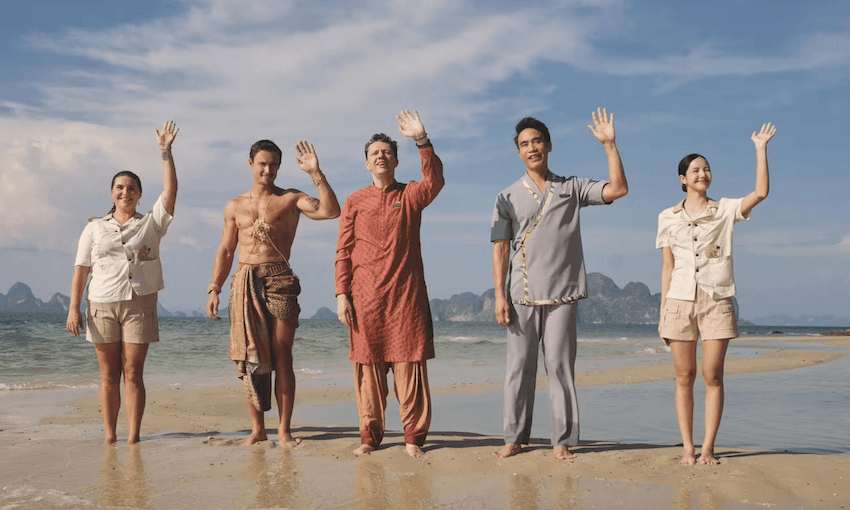The arrival of one of New Zealand’s most beloved broadcasters on breakfast TV is very perplexing, writes Duncan Greive
Four years have now passed since #savecampbelllive, one of the most bizarre episodes in our recent media history, and one which sent an iconic broadcaster into a funk from which he doesn’t seem to have emerged. Yesterday he was announced as the co-host of Breakfast, a show which appears to embody everything he stood against in that battle of one man against a corporate machine.
It’s worth remembering what the stakes felt like in those heady days of 2015. Campbell Live, along with its charismatic host, was a confounding property for TV3, as the channel was then known. Campbell spoke profoundly to the network’s sense of self, and because they had made one another, the connection was genealogical as much as philosophical. When in public, he was instantly recognisable, wearing his trademark suit to the supermarket and punk shows – a perfect metaphor for the channel’s contrast with One, whose newsreaders rarely reported stories, let alone mucked in with regular people.
As then-head of news Mark Jennings said at the time, “John Campbell and Campbell Live have won every award possible, broken some of the most important stories of the decade, repeatedly been voted most popular current affairs presenter and programme, and made a real difference to Kiwis’ lives.”
The very next line was somewhat more ominous: “Viewer expectations in 2015 are quite different from those of 2005.” Ratings for the show were bad and getting worse. It had become a bit of a millstone for the channel, something its audience likely claimed to love a lot more than they actually watched. What’s more, the show’s style felt both out of sync with the new, reality TV-centric direction of the channel, and a bit emo serious compared to the ‘everything’s fine, I drive a Ferrari’ vibe over on the Hosking-era Seven Sharp.
Yet when John Drinnan revealed it to be under review in the Herald, rather than just blithely take it, the show started a vigorous campaign for its own survival. Campbell’s was an extraordinary act of civil disobedience and breach of media etiquette: publicly begging for the life of his show night after night, to increasingly huge audiences.
We all know how it ended. The network decided to axe it anyway, and Campbell signed off to his highest-ever ratings, with over half a million tuning in for the teary end.
After that, he went to ground, only emerging months’ later for a lengthy profile from then-Metro editor Simon Wilson, after what was then-known as Radio NZ (it’s bleakly telling that every media brand mentioned in this story has a different name now) signed him up as the centrepiece of a new flagship drive show: Checkpoint with John Campbell. It invested considerable resource beyond the salary, making the show video as well as audio – though admittedly in a fairly rudimentary style, with lots of visualisations of radio interviews.
In the Metro interview, Campbell lamented the end of an era at Three, and with it the implied dereliction of a particular kind of news emphasis. “I absolutely did grieve,” he told Metro. “I grieved for our friendships, I grieved for the beautiful solidarity of our team, I grieved for the kind of journalism we were doing.”
Still, much as the parting hurt, he had surely landed in the best possible location for a man of his worldview: the suddenly revitalised RNZ, a public organisation under the stewardship of a driven private sector operator in former Fairfax head Paul Thompson. It was in the midst of an acquisition spree of its own, hiring other former Mediaworks titans like Carol Hirschfeld, Guyon Espiner and Jesse Mulligan.
Yet before long, Campbell was on the move again. Having found a home which seemingly satisfied all the journalistic and public good impulses he had boiling inside him – and won a big international award – he quit less than two years after Checkpoint debuted. Whatever the mission was: clearly not accomplished.
Having flirted with TVNZ in 2017’s mostly good, sometimes ridiculous What Next, he ended up rejoining the state giant midway through last year. The role was exceedingly ill-defined: “John will be a high impact player for 1 NEWS,” said its head of news, John Gillespie, invoking a sports analogy in lieu of a job description. “He’ll file for news and longer pieces for Sunday. And he’s likely to step in to present Tonight, Breakfast, Seven Sharp, Sunday, Q + A and 1 NEWS from time to time.”
Still, for a station in the midst of a renewal of its own, surely there would be plenty of meaty journalism to get into.
The first few months were thin. A podcast that came and went, some guest hosting, some specials. Then: an opening. Corin Dann, one of the most underrated operators in journalism – his adroit probing of Andrew Little during the heat of the Metiria Turei fallout led in a straight line to the elevation of Jacinda Ardern and thus plausibly swung the election – left to replace Guyon Espiner on Morning Report.
This created the most perfect opening the crusading John Campbell could ever have hoped for. Six months earlier the political current affairs show Q+A moved from its comically bad Sunday morning location to an actually very good Monday evening spot. This was part of an organisation-wide bout of public spiritedness and a marked swing toward younger and more progressive-leaning hosts, surely entirely unconnected from the election of a Labour government with big plans to spend and build in media.
Read more: Duncan Greive’s series on the state of New Zealand’s media
Here, surely, was the opportunity of a lifetime for Campbell. This era groans with extraordinary political storylines, from the housing crisis, to capital gains tax, to climate change – and that’s just those which the government has been unable to address so far this year. In part because of an inability to properly prosecute them in the media – sometimes through not turning up, others because key personalities see no problem to address. That does not describe John Campbell.
More pertinently, surely he would relish the opportunity to show all those who doubted that his approach still had a major league function that he could lead a serious current affairs show. In primetime, in this story-rich era. The job would give him the opportunity to get out regularly into the field, and put one of the most god-given interview talents in the country to its best possible use.
It was not to be. Yesterday word came that the slot was going to Jack Tame, a young and talented broadcaster and Breakfast host who has become increasingly politically astute, and may well find in the show his own making. And who should replace him on Breakfast, but… John Campbell?
It’s all very perplexing. Breakfast is precisely the kind of show that Campbell seemed to be decrying as he left Campbell Live. It’s light, pacy and relaxed. It has politicians on, but more often for a chat than a grilling. It has promotional photos featuring the core cast in a tight embrace. And, while he refused the addition of a single co-host to Campbell Live, now he has three.
More to the point, it’s exactly what he said he didn’t want on his way in. “After 20 years of sitting in a studio five nights a week, I’m really excited by the prospect of spending more time in the field,” he said in a press release announcing his recruitment by TVNZ. “I love getting out, meeting people and sharing their stories.” Now he’s shackled to a studio, five days a week, doing more hours than ever with a corresponding diminishment of his opportunity to go deeper.
That violent decoupling from Mediaworks must have been immensely traumatic for Campbell: the heat, the fight, the surging ratings, the awful end. And despite a situation at RNZ which looked outwardly perfect, it was counterweighted by some bad stuff – not least the brutal ousting of his friend and former boss Carol Hirshfeld, and the confusion over whether it would dial up its video or online sides. So the move to TVNZ makes sense. Breakfast? Not so much.
Still, it makes you wonder, after all this time, about the emotion of #savecampbelllive. For the true believers, this will be his most puzzling career move by far. It’s a bigger junction than the ousting from that show, a moment which will define the late career of the most iconic journalist of his generation. The question must be asked: will he eat Breakfast, or Breakfast eat him?





